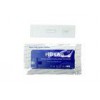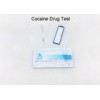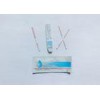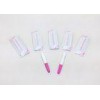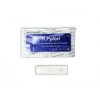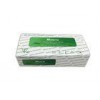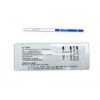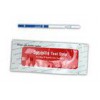High Accuracy HBsAg Rapid Diagnostic test CassetteWhole Blood/Serum/Plasma Specimen easily and quick operation
Product Name:
HBsAg Hepatitis B Surface Antigen Test (Cassette)
INTENDED USE
The HBsAg Rapid Test Device (Whole Blood/Serum/Plasma) is a rapid visual immunoassay for the qualitative presumptive detection of HBsAg in human whole blood, serum, or plasma specimens. This kit is intended to be used as an aid in the diagnosis of HBV infection.
INTRODUCTION
Hepatitis B virus (HBV) is the prototypic member of the hepadnaviruses. In the lipid envelope of this small DNA virus the hepatitis B surface antigen (HBsAg) is located. During the replicative phase of the virus this surface antigen is produced in excess and detectable in the blood of infected person. The antigens HBcAg and HBeAg are parts of the nucleocapsid. The incubation period of HBV is 6 weeks to 6 months.
PRINCIPLE
The HBsAg Rapid Test Device (Whole Blood/Serum/Plasma) has been designed to detect the HBsAg through visual interpretation of color development in the strip. The membrane was immobilized with antiHBsAg antibodies on the test region. During the test, the specimen is allowed to react with colored antiHBsAg antibodies colloidal gold conjugates, which were precoated on the sample pad of the test. The mixture then moves on the membrane by a capillary action, and interact with reagents on the membrane. If there were enough HBsAg in specimens, a colored band will from at the test region of the membrane. Presence of this colored band indicates a positive result, while its absence indicates a negative result. Appearance of a colored band at the control region serves as a procedural control. This indicates that proper volume of specimen has been added and membrane wicking has occurred.
TEST PROCEDURE
1. Bring the pouched test device to room temperature(15-30) prior to testing. Do not open the pouch until ready to perform the assay.
2. Remove the test device from the sealed pouch. Lay it on a flat, clean and dry surface.
3. Dispense 2 drops of the specimen or control into the sample well.
4. Hold the buffer bottle vertically and add 1 dro to the sample well. If using a pipette, change a new one to avoid cross-contamination. Draw and transfer 2-3 drops to the sample well.
5. Wait for the colored lines to appear. Interpret results between 15-20 minutes. Do not
interpret results after 20 Minutes.
INTERPRETATION OF RESULTS
Positive:
Two colored lines should be observed in the result window, one in the test region and another one in the control region. The color intensity of the test line may be weaker or stronger than that of the control line.
Negative:
Only the control line appears in the result window.
Invalid:
No line appears in the control region regardless of the presence or absence of the test
line.
PERFORMANCE CHARACTERISTICS
Table: HBsAg Rapid Test vs. EIA
| HBsAg Rapid Test | ||||||||
| Relative | Sensitivity: | 99.9% | (99.3% | + | Total | |||
| 100.0%)* | ||||||||
| Relative | Specificity: | >99.9% | (99.7% | |||||
| + | 820 | 1 | 821 | |||||
| 100.0%)* | ||||||||
| EIA | ||||||||
| Overall Agreement: 99.9% (99.8%99.9%)* | ||||||||
| 1 | 2134 | 2135 | ||||||
| *95% Confidence Interval | ||||||||
| 821 | 2135 | 2956 | ||||||



